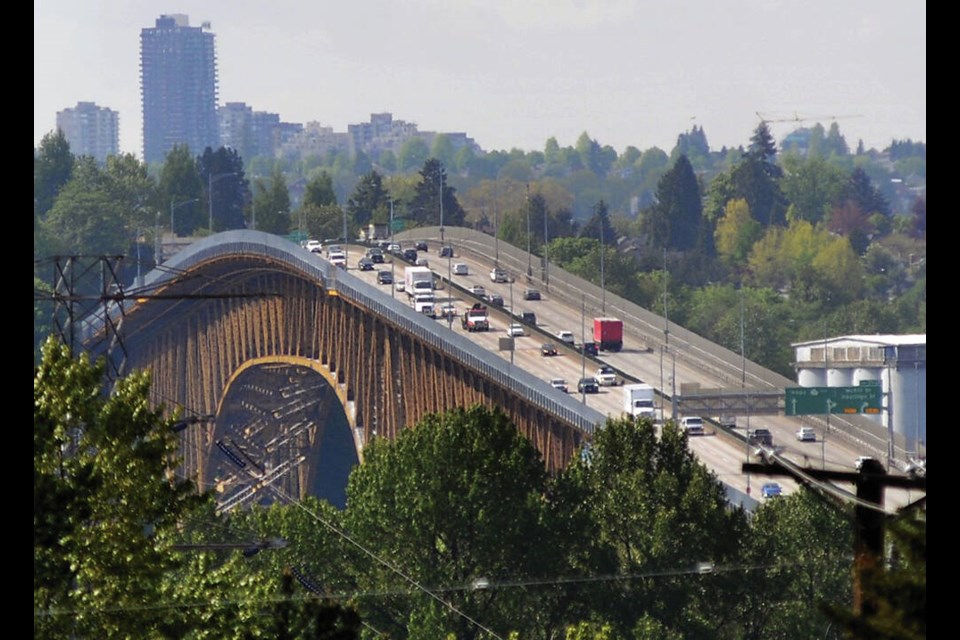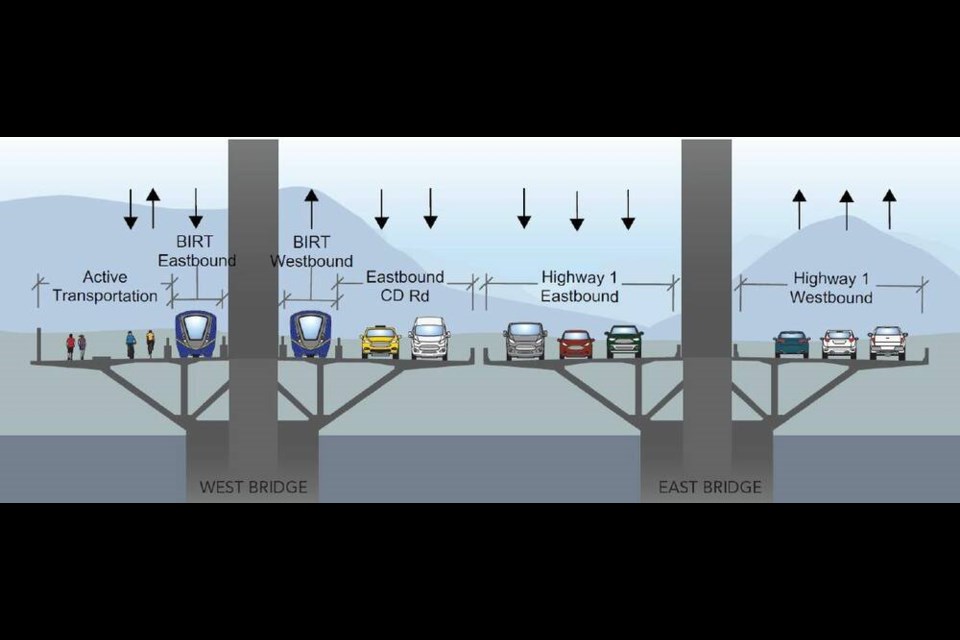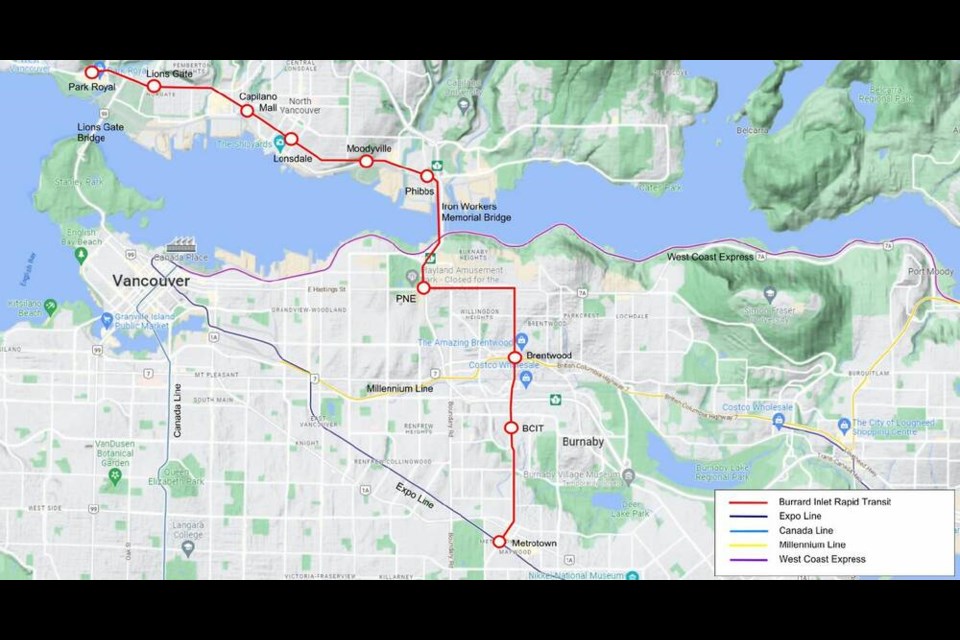Improved transportation infrastructure over the Second Narrows of the Burrard Inlet would be a massive boon for local economies, easing the daily journey of tens of thousands of daily commuters and reducing rush hour traffic dreaded by hordes of drivers.
That’s made clear in a detailed technical study commissioned by the District of North Vancouver.
The assessment, which looks at replacement options for the Ironworkers Memorial Bridge, determined that rapid transit to the North Shore could provide regional benefits of around $500 million per year by 2050.
Rapid transit over the Burrard Inlet could attract upwards of 120,000 daily transit users per day, removing 50,000 vehicles from the road daily while improving access to 175,000 jobs and 2,500 affordable housing units, according to the report.
The study shows how phased construction of another bridge structure would likely be built to the west of the current Second Narrows bridge. Two possibilities are proposed: a twinned deck construction – with a multi-use path, rapid transit and local collector lanes on one side, and regular traffic on the other – as well as a stacked option.
Phase 1 would start with the mixed-use deck being built first, with the vehicle traffic coming later but before the current Ironworkers Memorial Bridge is decommissioned.
The study also examined the impact of bringing various rapid transit options to the North Shore. Among the rapid transit options proposed, SkyTrain would be expected to bring around 120,000 users per day, light rail 101,000 riders and bus rapid transit around 41,000 people daily.
From Metrotown in Burnaby to Park Royal in West Vancouver, SkyTrain is the fastest option with a 23-minute expected travel time, followed by light rail at 47 minutes and bus rapid transit at 58 minutes.
The report concluded that bus rapid transit would not have sufficient capacity to meet 2050 ridership, while SkyTrain appears to be overbuilt and light rail appears to provide the right level of capacity.
High bus rapid transit ridership could make case for SkyTrain or light rail, mayor says
The document was produced last year, after North Shore Connects – a body of government representatives and municipal staff from the North Shore municipalities and First Nations – received feedback that it should consider light rail transit as a possible alternative to potential SkyTrain infrastructure over Burrard Inlet.
TransLink says it’s currently evaluating what the best rapid transit technology should be for the North Shore.
“TransLink is working with North Shore municipalities, local Indigenous Nations, the City of Burnaby, the City of Vancouver, and the Ministry of Transportation and Infrastructure on the Burrard Inlet rapid transit program – which will study what the best form of rapid transit to the North Shore should be and the preferred alignment,” the transit authority said in a statement.
The District of North Vancouver’s study is being factored in, but TransLink will still do its own independent analysis, the statement continued.
What commuters can expect in the near term is bus rapid transit over the Ironworkers Memorial Bridge, said DNV Mayor Mike Little.
“The provincial government gave $300 million to TransLink this year to assist us with our bus purchase,” he said.
That means rapid bus service could be available by 2026, Little said, which will involve dedicated lanes that will skip traffic while exiting and entering the Ironworkers Memorial Bridge.
Ridership numbers for bus rapid transit will be a key factor in making a case for options like light rail and SkyTrain, he added.
“Because if we can’t make the case, based on the data from bus rapid transit, it will be very hard to convince the region for the investment into the higher level of service,” Little said.







